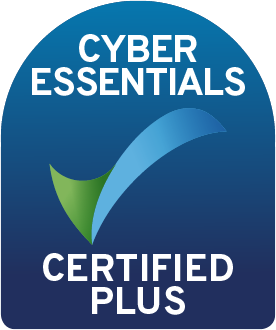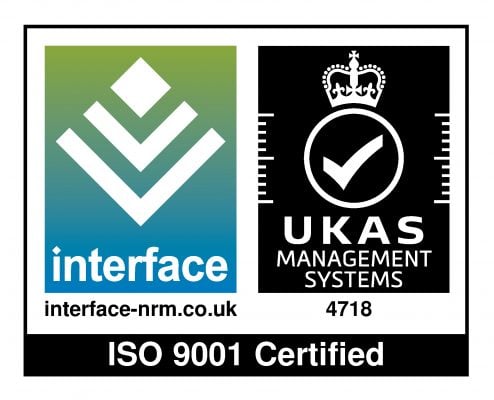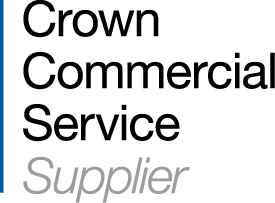Is your employee training software falling short of your expectations?
You’ve created the strategy, invested in the software, and rolled out the training, but something isn’t working. Don’t worry, you’re not alone. Time and time again, L&D professionals from businesses just like yours come to us looking for advice from our experts.
Learner engagement is low, knowledge retention is poor, employees aren’t achieving their goals, and the L&D ROI isn’t where it should be. What’s going wrong? In this blog, we’ll explore the top five reasons why your employee training software isn’t working for you, along with our top tips on how to turn things around.
1. You’re not using personalisation tools
It’s no secret that one of the key components to a successful L&D strategy is personalisation (which is why we’ve spoken about it a lot in previous blogs). Employees are looking for L&D programmes that cater to their employee’s specific needs and goals rather than a generic training course that doesn’t directly benefit them. A ‘one-size-fits-all’ approach simply doesn’t cut it today.
Personalising the learning experience can significantly boost engagement levels, learner satisfaction and motivation. So, how do you deliver a personalised learning experience?
If your employee training software isn’t working for you and your learners, perhaps you’re not utilising the tools and features that can help you tailor the learning experience. Employee training software, such as our Totara Learn LMS, offers personalisation tools such as the recommendation engine that determines and suggests content for a learner based on their past activities. This enables employers to automatically tailor the learning experience to individual learners without lifting a finger.
Advanced LMS platforms such as Totara Learn also enable personalised learning paths by allowing administrators to create tailored learning experiences for specific groups or individuals. Options like adaptive learning, learning plans, and dynamic audiences all offer a more personalised learning experience.
For example, you should look to see if your LMS can offer the following:
- Adaptive Learning
- Tailored journeys that allow learners to choose the most relevant path based on their needs, performance, or job role.
- Conditional access that provides access to specific learning materials based on criteria like course performance, job assignment, or completion of other learning items.
- Personalised feedback to guide users to relevant training materials and support their ongoing engagement in development activities.
- Learning Plans
- Structured pathways set up in your LMS can provide a clear structure or your learners, with easy access to required and optional courses.
- Goal alignment within the LMS enables you to link an individual’s learning plan to specific competencies, programs, and certifications, ensuring that learning is aligned with both personal and organisational goals.
- Dynamic Audiences
- Targeted content is a powerful way of using a dynamic audience configuration to tailor the learning experience for each individual without creating a large admin overhead.
- Role-based content means that you can assign different learning paths or content based on a user's role, department, or other relevant criteria.
If your employee training software doesn’t offer sophisticated personalisation tools like those that come as standard in our Totara solution, there’s still plenty you can do.
Reporting tools and analytics are vital tools in any employee training software, providing essential data and insights in just a few clicks. But are you leveraging reports to their full potential?
LMS reports can provide insights on areas such as course completion rates, engagement levels, course popularity and sign-on rates. You can use the data from these reports to analyse how users are interacting with your employee training software. Armed with this information, you can then personalise the learning experience for individuals by amending and enhancing content or learning plans to deliver better results.
Find out more about the power of LMS reports and analytics here.
2. You’re not utilising a broad range of content types
One of the biggest benefits of using employee training software such as an LMS to deliver training is the ability to move beyond the traditional classroom teaching methods and incorporate a diverse range of content delivery methods into your L&D strategy. If you’re not taking advantage of this, it’s unlikely that your learners will remain engaged with learning long-term.
Let’s explore some content types you should look at if your employee training needs a boost:
Microlearning – This content type typically takes under 15 minutes to complete, offering short snippets of training content in various formats such as mini-courses, video and audio.
Gamification – Incorporating game-style mechanics into a lesson can significantly boost learner engagement as they’re driven by a sense of achievement. Examples include quizzes and memory games.
Interactive training content – This content type is all about encouraging learners to play an active role in the training process. Examples include branching scenarios, interactive videos, and image hotspots.
Communal learning – One of the biggest mistakes we see people making with their employee training software is focusing on creating autonomous learning opportunities and failing to encourage communal learning. With features such as message boards, forums and workspaces, you can encourage employees to share knowledge and skills with their peers to create a dynamic learning environment that drives engagement and motivation.
Discover some more content types you may not have heard of here, or if you’re looking to up your content game, check out the broad range of content options available to Hubken clients.

3. A poor UX is driving learners away
A sure-fire way to set your employee training software up for failure is not focusing on the user experience (UX). If your platform is hard to navigate, clunky, cluttered, and slow, your employees won’t want to use it.
In our blog, the hidden impact of user experience on your e-learning platform, we explore the consequences of a poor UX. These include incomplete learning, risk of non-compliance, wasted content, wasted features, and ineffective onboarding. The UX really can make or break your employee training software, and yet, far too many people don’t make it a priority.
To improve your platform’s UX, focus on creating an intuitive and user-friendly interface, optimise the responsiveness, and ensure it’s easy to navigate and find content. Need some help doing this? Luckily for you, our Moodle and Totara solutions offer unique UX enhancements that you’ll only find with Hubken. Find out what these are by visiting our UX page and be sure to get in touch for further information.
4. Learners don’t recognise the benefits of using your solution
Employee training software is hugely beneficial for delivering core training such as compliance training, first aid training and onboarding programmes. However, employees need more than just ‘the essentials’. To really engage learners, you need to create learning activities that go beyond the basics and offer a wider range of career boosting benefits and opportunities.
One example of this would be creating continuous learning opportunities and lifelong learning activities that move beyond core skills development and enable employees to broaden their skillsets so they can take on new roles and responsibilities in the future. Help learners understand how their new skills and knowledge could be applied to real-life scenarios and used to boost their career long term.
If you need some additional help boosting employee motivation, try using features in your employee training software, such as leaderboards, badges, and certificates to serve as clear markers for achievements and recognition.

5. Your platform isn’t keeping up with changing demands
New technologies, new skills, updated knowledge requirements, and new training preferences are just some of the continuous changes that L&D teams need to be aware of when designing a training strategy. To support this strategy, you need employee training software that is flexible and feature-rich enough to keep up.
For example, the modern employee wants training opportunities that are easily accessible and on-demand, ready to access whenever and wherever suits them. In order to give your employees what they want, your platform should offer mobile learning functionality, offline learning and a broad content library that can be accessed on demand.
Another training feature that we’re seeing a huge demand for is social learning capabilities. People want to learn alongside their peers, create a sense of community and engage in social learning opportunities regardless of location. If your platform offers social features that employees enjoy using on their favourite social media apps, such as ratings, likes, comments and forums, you can expect a huge boost in engagement and ROI.
However, if your employee training software isn’t able to keep up with the times, perhaps it’s time to explore new options.
We’re here to help
Our award-winning e-learning solutions have all the tools, features and technology you need to optimise your L&D and create the best training experience for your employees. Visit our Totara and Moodle pages for more information or get in touch with us today to find out more about what we can do for you.
.png)
View our range of webinars
From AI and HR best practices to bespoke content design and the power of e-learning. Explore our range of completely free webinar recordings.
-1.png?width=1080&height=150&name=Slim%20blog%20CTAs%20(3)-1.png)
.png?width=1080&height=150&name=Slim%20blog%20CTAs%20(12).png)



